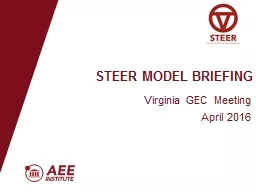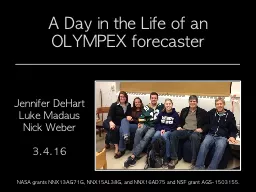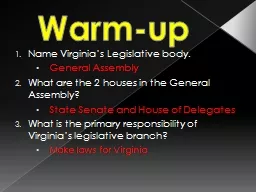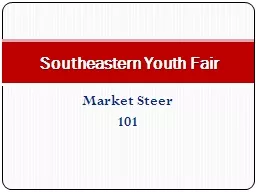PPT-STEER Model Briefing Virginia GEC Meeting
Author : tatyana-admore | Published Date : 2018-09-22
April 2016 The State Tool for Electricity Emissions Reduction STEER is an openaccess integrated resource planning IRP tool It solves for least cost Clean Power
Presentation Embed Code
Download Presentation
Download Presentation The PPT/PDF document "STEER Model Briefing Virginia GEC Meetin..." is the property of its rightful owner. Permission is granted to download and print the materials on this website for personal, non-commercial use only, and to display it on your personal computer provided you do not modify the materials and that you retain all copyright notices contained in the materials. By downloading content from our website, you accept the terms of this agreement.
STEER Model Briefing Virginia GEC Meeting: Transcript
Download Rules Of Document
"STEER Model Briefing Virginia GEC Meeting"The content belongs to its owner. You may download and print it for personal use, without modification, and keep all copyright notices. By downloading, you agree to these terms.
Related Documents














